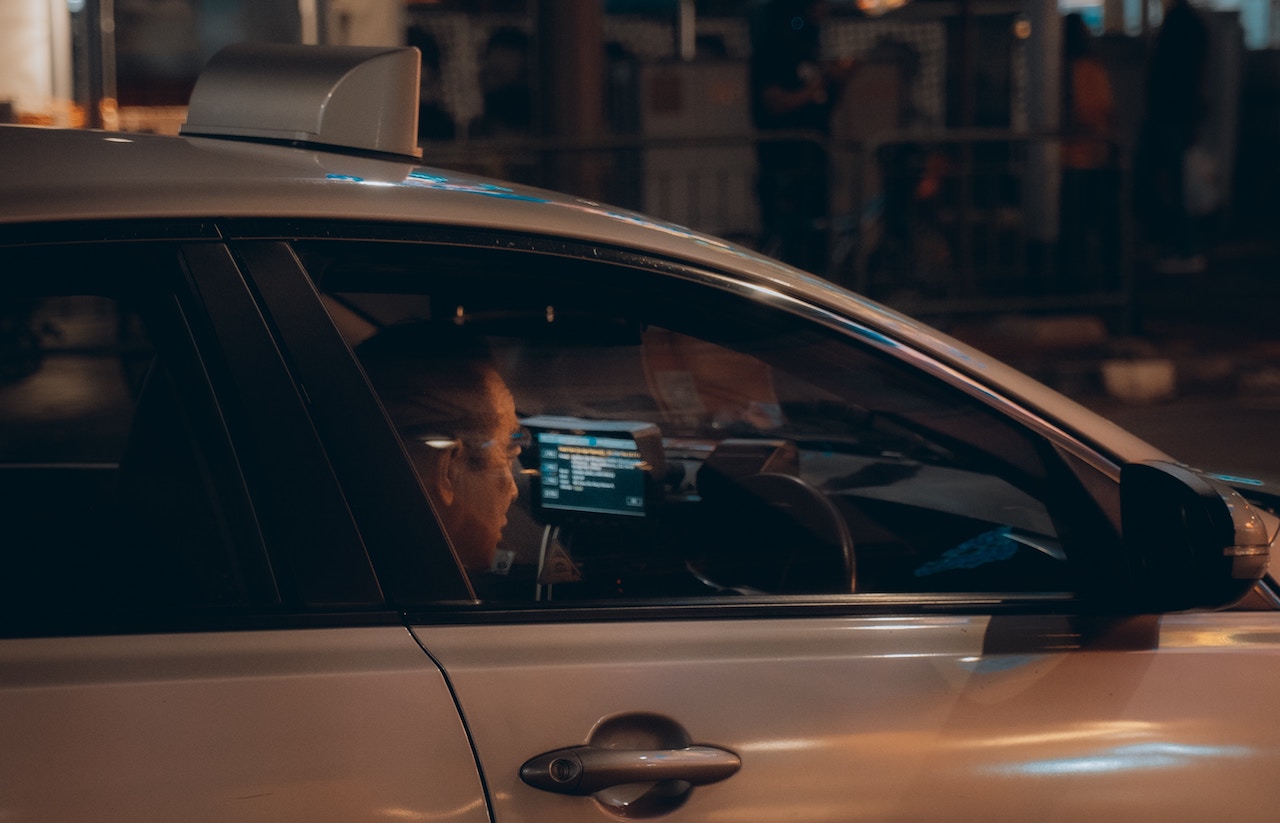Top image: Luah Jun Yang / Unsplash
In 2017, real estate mogul Tim Gurner went on 60 Minutes Australia and dished out some advice for young people struggling to buy homes: Stop buying avocado toast.
The creamy brunch entrée thus became the symbol of millennial overspending—and the scapegoat for our inability to afford housing.
Tim’s hot take was panned—we all know there are bigger factors at play contributing to housing affordability and accessibility (especially here). But it represents a perennial struggle: Treat yourself today, or save for a rainy day?
Shameful as it is to admit, ride-hailing is my avocado toast.
If I have to be anywhere in the morning, best believe I’m checking each app for the cheapest price between drawing each brow on and pressing ‘book’ just before I get dressed. It’s that ingrained in my morning routine.
Or at least, that’s how it started. Beyond the morning rides to work, my addiction has spread to encompass anytime I have an appointment outside.
Using ride-hailing apps is more economical than owning a car in Singapore, at least if you’re a single working adult. But it ain’t cheap. My dependency on the apps runs up to around $17 to $30 per trip to the office at Ann Siang (thanks, surge pricing). That’s $300 to $400 a month on rides alone.
That’s a good chunk (about 25 percent, to be more specific) of my monthly expenses that could be funnelled into savings instead.
Clearly, I’m not alone. An informal poll by RICE revealed that 56 percent of 197 respondents feel they spend too much on ride-hailing apps. But only 52 percent said they were trying to kick the habit.
On Perpetual Exhaustion
We know we could be saving money and taking public transport instead. So why don’t we?
The answer, for some of us, at least, is that we’re too tired.
Jodie, a 23-year-old software engineer, tells me that a big reason for his ride-hailing habit is simply because he “can’t wake up”. Not only does he have a full-time job, but he also spends time working on his start-up business at night.
As we speak, he’s on a Grab ride to a dinner appointment.
Jodie estimates blowing about $700 monthly on ride-hailing apps to get from his home in Yew Tee to his office near Bishan daily. “I am making Anthony Tan (the co-founder and CEO of Grab) too much money,” he quips.
I, too, fall into the can’t wake up category, but I don’t think I can blame just laziness. It’s a potent mix of late-night doomscrolling, revenge bedtime procrastination, and waking up feeling drained.
Liam*, who spends about $200 a month on rides to his office from Hougang to the Central Business District (but takes public transport home), has a theory.
“It’s the journey to the office that, for some reason, I find more difficult. I think it’s because when you go home, the destination is more tantalising than the office.”
The 30-year-old, who works in the media and marketing industry, adds that the comfort is an added plus as someone particularly sensitive to Singapore’s unforgiving heat.
“I’m someone who tends to sweat more than most people. So, because of that, public transport becomes a pain in the ass.”
Self-Care or Self-Indulgence?
Ride-hailing apps are convenient. We all know that. But when we rely on them too much, there are some inevitable downsides.
It’s a vicious cycle. Relying on ride-hailing apps as a crutch only exacerbates my poor time management. I end up running late more often, which in turn causes me to use the apps even more. There are also times when I drop cash on private transport and still end up late for my appointments.
Those rides are particularly unenjoyable. Instead of sitting back and relaxing, I’m anxiously refreshing the app, hoping the estimated arrival time gets shorter. All while filled with self-loathing because I know I can and should do better.
Then there’s the issue of being careless with money. Jodie admits that there are times when he’s booked rides from multiple apps amid his rush to get to work.
“There are many occasions when I forget to cancel, so three cars will show up.”
When that happens, his transport costs for that morning will include the extra cancellation fees on top of his usual fare.
It’s a fine line between spending out of necessity and out of frivolousness, and it’s clear that Jodie and I could do with a little more austerity. Jodie tells me frankly that he feels like he should be reducing his expenses, but simply hasn’t.
“My mum does nag that I cannot spend the money I make on Grab. It’s kinda not worth it also,” he says.
Spending Within Means
While there is a case to be made for reducing our ride-hailing expenditure, it does seem that Jodie, Liam and I are outliers.
Vasu Menon, OCBC Bank’s Executive Director of Investment Strategy, tells RICE that Singaporeans in their 20s and 30s are actually doing well at spending within their means and saving.
The bank’s Financial Wellness Index survey in 2022 showed encouraging figures. Those in their 20s and 30s set aside 35 percent and 31 percent of their income, respectively, as cash savings. Meanwhile, those aged 40 and 65 set aside 28 to 29 percent.
A good baseline figure is saving at least 10 per cent of your monthly income, he says.
“Interestingly, the survey also found that far from a care-free attitude, 62 percent of those in their 20s and 56 percent of those in their 30s worry that they will not have enough retirement funds, which may explain why they are saving more than the average Singaporean.”
Regarding our supposed addiction to ride-hailing apps, he opines: “While it may seem like digitally savvy young people would be the most likely users of such apps, there is no clear evidence to suggest that they could scrimp on other spending just to spend on private transportation.”
According to the expert himself, there’s nothing wrong with spending on private transportation, especially since it helps most people save time commuting. The key, however, is to take it only when necessary.
“The savings derived from taking more public instead of private transportation can accumulate over time, and if this is invested, it can compound and grow substantially and help young people to meet important future life goals.”
Despite his staunch preference for private transport over public transport, it seems that Liam is accomplishing this a little better than Jodie and me.
For one, he tries to arrange shared rides with his friends where possible. He also says that, nowadays, he tries to host his friends at home instead of going out.
Private transport is a luxury for him, he admits, especially with other expenses like rent, which comes up to over a thousand dollars monthly. But ride-hailing is an expense he’s willing to budget for.
“The fact that cars come to you and bring you early to the location—the convenience is unmatched.”
Just Book the Grab (if You Can Afford It)
Liam’s sentiments echo that of other financial experts, who say that at the end of the day, money should be a tool for a better life.
Instead of hesitating on everyday indulgences like avocado toast, a latte, or a Grab ride, just go ahead and spend the money if it adds value to your life.
“Spending isn’t supposed to be an extreme thing. Saving every penny for the future doesn’t make someone’s current life that enjoyable,” L.J. Jones, financial planner and founder of Developing Financial, told Yahoo! Finance.
“Someone who spends everything on lattes or something else may make their future life less enjoyable because they don’t have enough money to spend later. Spend your money to enjoy today while also saving for tomorrow to enjoy that as well.”
It should be said, however, that having enough liquidity to splurge and save simultaneously is a privilege.
Frequent private-hire rides are out of the question for some, even if they work more tiring jobs or longer hours than Jodie, Liam and me.
Convenience Is King
Like $15 avocado toasts and $7 lattes, private-hire addictions are usually associated with middle-class young people.
Unlike edibles, though, ride-hailing does have a real impact on the environment. It’s ammunition for older generations to point the finger at us and paint a picture of a spoilt strawberry generation—selfish and self-indulgent.
Liam isn’t the biggest fan of this narrative, which he calls “annoying”.
Considering that ride-hailing apps only became widespread in recent years, while Gen Z and millennials were coming of age—Uber, for example, only entered the Singapore market in 2013—he asserts that it only makes sense for us to rely more on them.
With changing times also come changing priorities.
What older generations may see as entitled snowflake traits, like paying for convenience, may simply be a case of changing lifestyles and priorities.
Young working adults of today are more likely to take better care of themselves, spending twice as much as boomers on self-care expenses such as workout regimens and therapy, studies show.
We also work longer hours and spend more time socialising than previous generations.
In our defence, it’s a fast-paced world, and it only makes sense to pay for a shorter commute if you can afford it.
When time is money, convenience is worth spending on.






